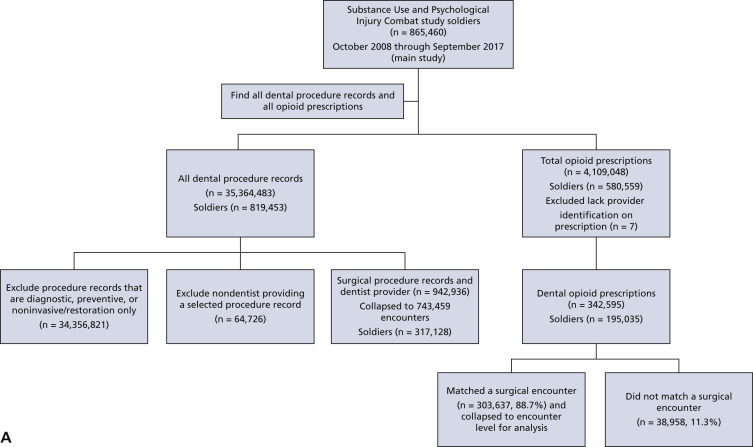Background
Variation in opioid prescribing rates among geographic regions is well known and,
to the authors’ knowledge, there have been no studies of variation from 1 dental clinic
to another, and such variation might suggest an excess of opioid prescriptions.
Methods
The authors used a retrospective cohort design study of all dental encounter records
for 819,453 soldiers in the dental clinics (n = 250) of the US Military Health System
during the period from 2008 through 2017.
Results
There were 743,459 dental surgical encounters. Opioid prescriptions were filled for
36.7% of these encounters. Multinomial multilevel regression found statistically significant
between-facility variance in opioid prescribing, which was partially explained via
facility-level characteristics (region, type, and percentage of surgeries for young
patients), and practice variables (mean percentage extractions, percentage periodontic
surgery, and percentage specialists).
Conclusions
The authors found a substantial variation in opioid prescribing among dental clinics
in the US Military Health System. Dentists at 11 of the 30 largest military treatment
facilities prescribed at a rate 4 percentage points higher than expected, and dentists
at 9 of these military treatment facilities had a rate of 4 percentage points lower
than expected. Additional study of the factors allowing the low-prescribing facilities
to achieve these rates might lead to an overall decrease in opioid prescribing.
Practical Implications
The authors’ findings of dental opioid prescribing in the military can lead to appreciation
of the guidelines from the American Dental Association and the American Association
of Oral and Maxillofacial Surgeons, which suggest alternatives to opioid prescribing
for surgical procedures, particularly for tooth extractions.


